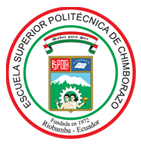Analysis the predictability of the annual concentrations of PM2.5 in Quito, applying the entropy of Kolmogórov-Sinai
DOI:
https://doi.org/10.47187/perf.v1i23.247Keywords:
PM2.5 Particulate Material, Delay Time, Lace Dimension, Lyapunov Exponents, Kolmogórov-Sinai EntropyAbstract
The particulate material of 2.5 microns known as PM2.5 is found in urban air, mainly due to vehicular contamination. The health effects are irreversible because by their size it can permanently lodge in the pulmonary alveoli. The objective of the research was to analyze the predictability of PM2.5 concentrations in Quito-Ecuador (0-13'12.46"S, 78'30'36.97" O, height 2830 m), using the entropy of Kolmogórov-Sinai. The historical data of the concentrations of PM2.5, recorded by the Quito Metropolitan Atmospheric Monitoring Network from 2005-2016, were used. Prior to the predictivity analysis, the time delay parameters, the fit dimension and the Lyapunov exponents that determine the system dynamics, were calculated. The Tisian model is used to process the data. The largest number of positive exponents of Lyapunov are found in 2011, 2013 and 2016. Kolmogorov-Sinai entropy has a tendency to increase over the course of the 12 years analyzed, which implies a decrease in the predictability of PM2.5 data, due to the loss of information over the course of the system evolution.
Downloads
References
Linares Cristina, Díaz Julio. Efecto de las partículas de diámetro inferior a 2,5 micras (PM2,5) sobre los ingresos hospitalarios en niños menores de 10 años en Madrid. Gac Sanit. 2009; 23(3): 192-197. Disponible en: http://scielo.isciii.es/ scielo.php?script=sci_arttext&pid=S0213-91112009000300005&lng=es.
Rojas Bracho, Leonora; Garibay Bravo, Verónica Las partículas suspendidas, aeropartículas o aerosoles:
¿hacen daño a la salud?; ¿podemos hacer algo? Gaceta Ecológica, núm. 69, octubre-diciembre, 2003, pp. 29-44.
Ballester, F; Querol, X and Medina, S. Situación actual, prioridades de actuación y necesidades de inves- tigación en contaminación atmosférica y salud en España: conclusiones del taller AIRNET de Barcelona. Gac Sanit. 2007; (2007), 21:70-5.
Secretaría del Ambiente, Informe de calidad del aire en el Distrito Metropolitano de Quito 2016, acceso 3 de junio de 2019, http://www.quitoambiente.gob.ec/ambiente/ images/Secretaria_Ambiente/red_moni- toreo/informacion/ICA2016.pdf.
Chuquer, David & Ampudia Vásquez, Santiago & Cruz, Carolina & Bustamante, Leonardo & Ramirez Cevallos, Francisco & reina, carlos. (2018). Contaminación del aire a filo de calle en quito, caso estudio Guayaquil y Espejo, Revista Perfiles. 2. 90-99.
Alligood, K; Sauer, T and Yorke, J., Chaos an introduction to dynamical systems. New York, Springer-Ver- lag, 1996.
Hilborn, R.C., Chaos and Nonlinear Dynamics: An Introduction for Scientists and Engineers. Oxford University Press, New York, Oxford, 1994.
Hegger, R; Kantz, H and Schreiber, T. Practical implementation of nonlinear time series methods: The TISEAN package, Chaos, 1999, 9, 413; https://doi.org/10.1063/1.166424.
Escudero I. y Haro A., “Modelación y pronóstico del potencial energético hídrico del río Blanco del cantón Riobamba usando la teoría del caos y un método convencional”, Rev. XVI Jornadas de estadística e informática, Guayaquil, Ecuador, 2010.
Garín F. Janampa A., Juan M. Pesantes R. y Martín B. Sandoval C., Generalization of the kolmogorov-si- nai entropy: z-logistic maps, Anales Científicos, 2015, 76, 237-240
Da- Hai Xia et al., Atmospheric corrosion assessed from corrosion images using fuzzy Kolmogorov–Si- nai entropy, Corrosion Science, 2017, 120, 251-256.
Das, Moupriya and Costa, Anthony B. and Green, Jason R, Extensivity and additivity of the Kolmogo- rov-Sinai entropy for simple fluids, American Physical Society, Phys. Rev., 2017, E 95, 022102.
Pinos M., “Estimación del cambio climático en la ciudad de Riobamba usando la teoría del caos”, Tesis de pregrado, Universidad Nacional de Chimborazo, Ecuador, 2002.
Fraedrich, K., Estimating weather and climate predictability on attractors. Journal of the Atmospheric Sciences, 1987, 44, 722-728.
Fernández, D. Reducción del ruido y predicción de series temporales de alta frecuencia mediante sis- temas dinámicos no lineales y técnicas neurales. Banco Nacional de Uruguay. Disponible en 2014. http:// www.bvrie.gub.uy/ local/File/doctrab/2014/1.2014.pdf.
Kennel, M, Brown, R and Abarbanel,H, Determining embedding dimension for phase-space recons- truction using a geometrical construction. Phys. Rev., 1992. A 45, 3403.
Sauer, T; Yorke, J and Casdagli, M., Embedology, J. Stat. Phys. 1991, 65, 579.
Takens, F., Detecting strage attractors in turbulence, Lecture notes in Math. v.898, Springer-Verlag, New York, pp. 366-381, 1981.
Bejar J., Caracterización de datos electrocardiográficos mediante la teoría del caos, Informe final conve- nio ESPOCH-FUNDACYT, Riobamba, Ecuador, 2001.
Taher A. zar and Vaidyanathan S., Advances in Chaos Theory and Intelligent Control, Springer Interna- tional Publishing Switzerland 2016.
Ruelle D., “Early chaos theory”, Physics Today, pp. 27, May, 2013.
Inga Stolz, and Karsten Keller, Tom Meyerovitch, Sieye Ryu, A general symbolic approach to Kolmogo- rov-Sinai entropy, Entropy 2017, 19, 675.
Santos Burguete C., “Física del caos en Predicción Meteorológica. Edi. Digital AEMET, 2018.
Haro, A., Llosas Y., Lamaico C., Predicción de datos meteorológicos en cortos intervalos de tiempo en la ciudad de Riobamba usando la Teoría del Caos. Sistemas Cibernética e Informática, 2016, 13, 35:41.
Van Beijeren, H. and Dorfman, J. R. and Posch, H. A. and Dellago, Ch., Kolmogorov-Sinai entropy for dilute gases in equilibrium. American Physical Society, 1997, 5272—5277.
Downloads
Published
How to Cite
Issue
Section
License

This work is licensed under a Creative Commons Attribution-NonCommercial 4.0 International License.


























